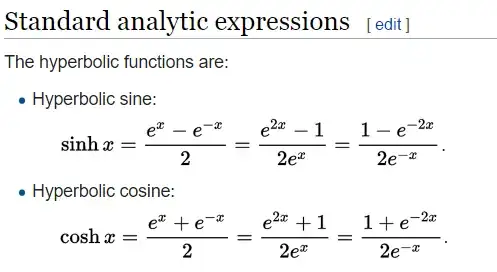I am persistently confused by the usage of $=$ and $:=$ when reading papers and writing in math. Quick google search on "When to use defined as (symbol)", returned no useful result.
The way I am currently using $:=$ is basically assign the name of a variable/quantity to another. For example, let $f(x):= \sin(x)$, then clearly $f'(x) = \cos(x)$. But if I write it this way, then wouldn't it also be acceptable to write:
$$f(x):= \sin(x) := \dfrac{\exp(ix) - \exp(-ix)}{2i}$$ After all, isn't $\sin$ defined as the difference of complex exponential over $2i$?
I have seldom seen anyone write this way (certainly not in any introductory calculus textbooks), therefore I am reluctant to follow this convention.
As another example, On Wikipedia, it writes:

But it doesn't follow this convention when defining functions, for instance:
I have also seen very varied usage of $:=$ when introducing sets. Some authors prefer to say something like: let $C:= \{x\in \mathbb{R}^2|x_1^2+x_2^2 = 1\}$, other prefer just to say $C= \{x\in \mathbb{R}^2|x_1^2+x_2^2 = 1\}$
Can anyone elaborate on under which context I should use $:=$ over $=$? What is a way to keep consistency?
